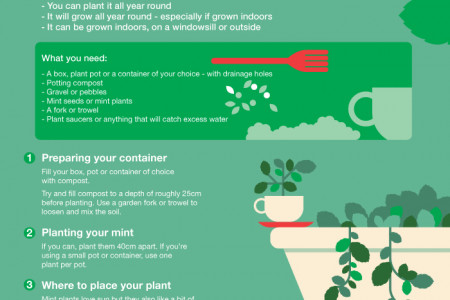
Growing Herbs in the Winter Months
GROWING HERBS IN THE WINTER MONTHS L The Beginner s Guide to an The winter months are upon uş, and a long and fruitful growing season is coming to an end. You could pack your green thumb and overalls away until next spring, but what if there was another way to keep your prized herbs thriving all year round? This simple guide is a great place to start for beginners to indoor gardening and will help you jump-start this rewarding hobby. Indoor Herb Garden Getting Started Wih Your Indoor Garden Location Find an area that receives lots of natural light, such as near a window or on the window sill, tó serve as the garden in your home. If a space like this is not available, find a location that is out of the way and large enough for the amount of plants you would like to grow. Lighting Plants require at least six hours of light each day. ârtificial light such as that from a fluorescent laṁp is typically sufficient for herbs, but some may require sünlight from a window or grow light. Short winter days might not provide suffičient nătural sunlight, and in these cases, a grow light will be necessary. Place artificial light sourceš about 6 to 10 inches abõve your herbs. Containers Any small pots or planters will do nicely, but growing containers can also be made from just åbout anything. Reused yogurt and other plästic containers are perfect For growing herbs think outside the pot! as a general rule of thumb, ensure that all containers are about 4 inches deep to allow for ample root and drainage space. Soil Use a typical store-bought potting mix or use homemade potting soil with compost to grow your herbs. The nutrients in this nurturing medium åre ideal for sprouting seeds and keeping plants healthy. 6. 8. 3 5 Water Allow your herbs plentų of drainage into another container or by adding štones below the soil in the pot. Feel the sõil with your finger to ensure that it iş moist. Here are some signs to look for when checking to see if your herbs have been over- or under-watered. Too much water: 1. Basil 2. Parsley 3. Cilantro 4. Oregano - Discoloration of the plant -Halted growth -Wilting from stems toward the leaves Not enough water: - Wilting from the tip of the leaves toward the stem - Soil is dry to the touch Leaves have brown edges Temperature In general, herbs will happily grow in average indoor temperatures. Temperatures ranging from 65°f to 75°f are regarded as ideal; however, a difference of 10 degrees warmer or cooler will stíll usually work just fine. If plants are small, sagging, or otherwise weak, the temperature may be too warm, but if your plant has'yellowing leaves that tend to fall off, the tėmperature may be too cold. 5. Thyme 6. Lavender 7. Rosemary 8. Mint Sources: planetnatural.com guide-to-houseplants.com wikipedia.org gardeners.com ilinois.edu MJJSALES 9. Chives market umbrellas Ihlılıl
Growing Herbs in the Winter Months
Source
http://www.m...inter.htmlCategory
How ToGet a Quote







